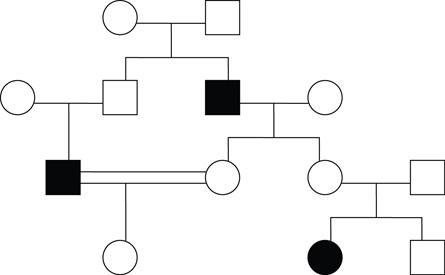Module 6
1. Module 6
1.48. Module Summary/Assessment
Module 6—Mendelian Genetics: The Transmission of Traits to the Next Generation
 Module Summary
Module Summary
In this module, you explored the basic principles and concepts of dominance, segregation, and independent assortment. You analyzed ratios and probabilities of genotypes and phenotypes and applied this understanding to examine the many other possible ways traits can be transmitted from generation to generation. You discovered how variability can be dependent on the number of genes involved in a trait, crossing over, and gene linkage. You also learned why some traits, like hemophilia, are more common in males than in females. You are now aware of some of the many technologies that can be used to study the transmission of traits. In this module, you used some of these tools in your study of heritable traits.
Until Gregor Mendel conducted careful breeding experiments with garden peas, the moving of traits from one generation to another was a mystery. Using Mendel’s basic principles, we can now create more effective breeding programs for agriculture, or give meaningful council to young couples about the chances of their baby having a unique disorder. Combining those principles with Morgan’s evidence that genes occur on chromosomes, we can create tests for the presence of genes, and even target specific genes for transfer to other organisms. With the conclusion of the human genome project, we now have a complete map of all human genes. As scientists work to discover how genes work together and how each gene is expressed, we will come closer to understanding our complete genetic make up, enabling us to better predict the results of future generations, and even manipulating those results to meet our needs and/or desires.

© Kameel4u/shutterstock
 Module Assessment
Module Assessment
You may choose to complete Task 1 or Task 2.
Task 1: Analyzing Familial Mediterranean Fever (FMF) (24 marks for questions + 12 marks for presentation = 36 marks)
Familial Mediterranean Fever (FMF) results in short but re-occurring episodes of fever, as well as pain in the chest, joints, and abdomen. The disease occurs most frequently in individuals of Mediterranean descent. The gene responsible for FMF was discovered on chromosome 16 in 1997. The following pedigree shows the occurrence of this disorder in one family.

Complete the following tasks and questions:
- Label the diagram with the correct Roman and Arabic numbering. (4 marks)
- What is the mode of inheritance for FMF? (2 marks)
- Provide the phenotypes and genotypes of all the individuals in the pedigree. (6 marks) Whose genotype can you not be sure of? (2 marks)
- III-3 and III-4 are planning on having another child. What are the chances they will have another daughter with FMF? Construct a Punnett square to demonstrate this cross. (6 marks)
- FMF often occurs with a genetic link to increased sneezing and wheezing. It turns out that both the sneezing trait and the wheezing trait are recessive and carried on chromosome 16 as well. Using the following information, construct a scale gene map of chromosome 16. (4 marks)
- Crossover frequency between sneezing and FMF: 4.5
- Crossover frequency between wheezing and FMF: 8.5
- Crossover frequency between sneezing and wheezing: 4.0

© afro/shutterstock
You are a summer student working for the Royal Alberta Museum. The museum is going to put on a new display featuring Medieval Europe. As part of the display, the curators are hoping to educate people on the inherited diseases of the royal families of Europe. Your job is to create a display illustrating the occurrence of hemophilia in Queen Victoria and Prince Albert’s family. Your display will need to explain the mode of inheritance and the likelihood of certain family members having the disorder. You may create a poster, tri-board display, or digital exhibition such as a PowerPoint or video. Your display should also be attractive to visitors of the museum.
Your display must include answers to all of the following questions and/or instructions:
- Create a pedigree for three generations, including Queen Victoria and Prince Albert. Label the diagram with the correct Roman and Arabic numbering. (4 marks)
- What is the mode of inheritance for hemophilia? How do you know this from the information you end up with in the pedigree? (2 marks)
- Provide the phenotypes and genotypes of all the individuals in the pedigree. (6 marks) Whose genotype can you not be sure of? (2 marks)
- If Alfonso XIII and Victoria had had another child, what would be the chance of them having a son with hemophilia? Construct a Punnett square to demonstrate this cross. (6 marks)
- Hemophilia often occurs with a genetic link to colour-blindness or pattern baldness. It turns out that both the colour-blindness trait and the pattern balding trait are recessive and are carried on chromosome 16 as well. Using the following information, construct a scale gene map of the X chromosome. (4 marks)
- Crossover frequency between balding and hemophilia: 17.5
- Crossover frequency between colour-blindness and hemophilia: 8.5
- Crossover frequency between balding and colour-blindness: 9.0
In addition to the questions/instructions above, your teacher may decide to mark the format of your presentation using the following rubric as a guide:
Museum Display Rubric
| Level | Descriptions |
4 |
|
3 |
|
2 |
|
1 |
|